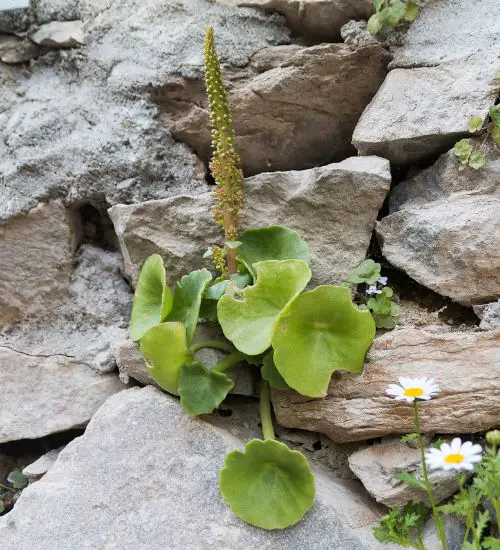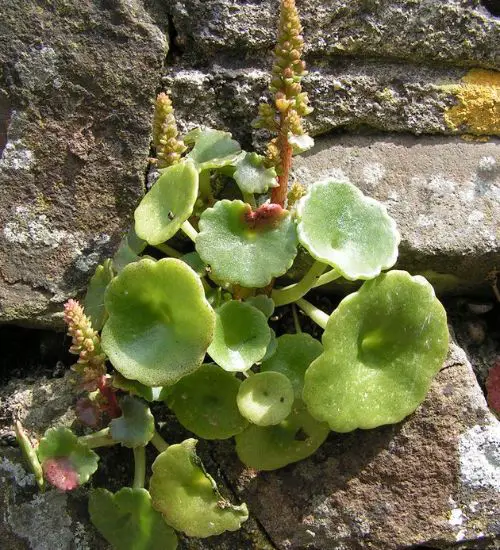Sun: Full sun to partial sun
Water: More water than a typical succulent
Temperature: Zone 6a from -10° F to -5° F (-23.3 ° C to -20.6° C) to Zone 9b from 25° F to 30° F (-3.9° C to -1.1° C)
Winter Survival: Cold hardy
Propagation: seeds
Flower: in the summer
Flower Type: Yellow-Green
Toxic: Generally non-toxic to humans and animals
Dormant: summer
Space Requirement: Outdoors
Common Problems: No major pests
Where to buy Umbilicus Rupestris?
Basc Care for Umbilicus Rupestris
Watering
What you need to remember is that this type of succulents needs to be watered for every 2 weeks
Can you water your succulent more than what its need? The answer is yes and no. In extreme conditions, you can water your plants more often when you notice the soil is completely dry.
Fertilizing
Only feed this succulent during its active growing seasons which means winter. Use the right fertilizer applied in the right amounts. Applying half-strength balanced fertilizer every month or so is recommended for optimal results.
Do not fertilize during summer as the plant is dormant.
Sun & Location Requirements for "Umbilicus Rupestris"
Umbilicus Rupestris needs full sun to partial sun in order to thrive. Aim for 6 hours of direct sunlight each day, and adjust depending on the season and your climate. If you don't have an outdoor spot that receives sufficient light, consider placing your succulent near a south-facing window all year round.
As per this succulent profile, it is only able to stay healthy when the environment temperature is above the range of zone 6a from -10° F to -5° F (-23.3 ° C to -20.6° C).
Umbilicus Rupestris is a member of the Umbilicus family and is known for being cold hardy. It is able to survive temperatures down to 0°F, making it an ideal choice for areas with cold winters. The succulent's thick leaves and stems help retain moisture in its cells, allowing it to survive through frigid temperatures. Additionally, the colorful foliage of Umbilicus Rupestris adds a festive touch to any garden in cold areas.
Any succulents in the group will need a large space to grow. You should place your pot outdoor. Since this plant needs a lot of space than other succulents, you should consider not planting them together with other succulents/plants.
Propagation
Umbilicus Rupestris propagates easily from seeds, however it's important to look for healthy ones which are plump, dark in color and slightly sticky when touched. To start the propagation process, mix a soil mixture with well-draining potting mix then sow the seeds evenly and press them lightly into the surface. Finally, water the soil using a spray bottle and place it in bright but indirect light to ensure germination.
Toxicity

Umbilicus Rupestris is generally non-toxic to humans and animals. However, the plant may contain certain toxins which can cause mild skin irritation if it is ingested or comes in contact with skin. Therefore, it is important to keep the plant away from children and pets for safety reasons.
Pests and Diseases
Umbilicus Rupestris is not affected too much by common pests and diseases like most of the other succulents.


